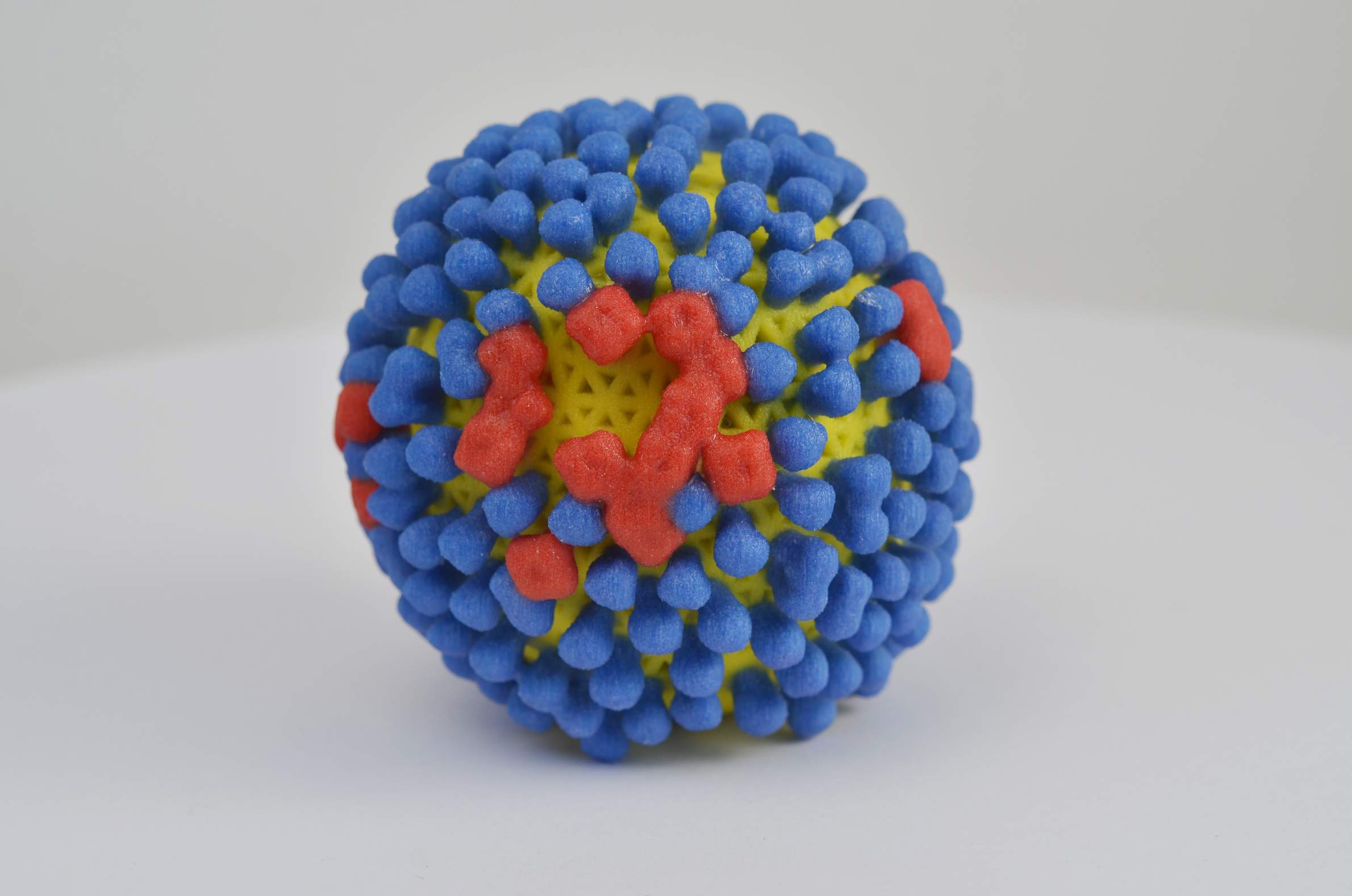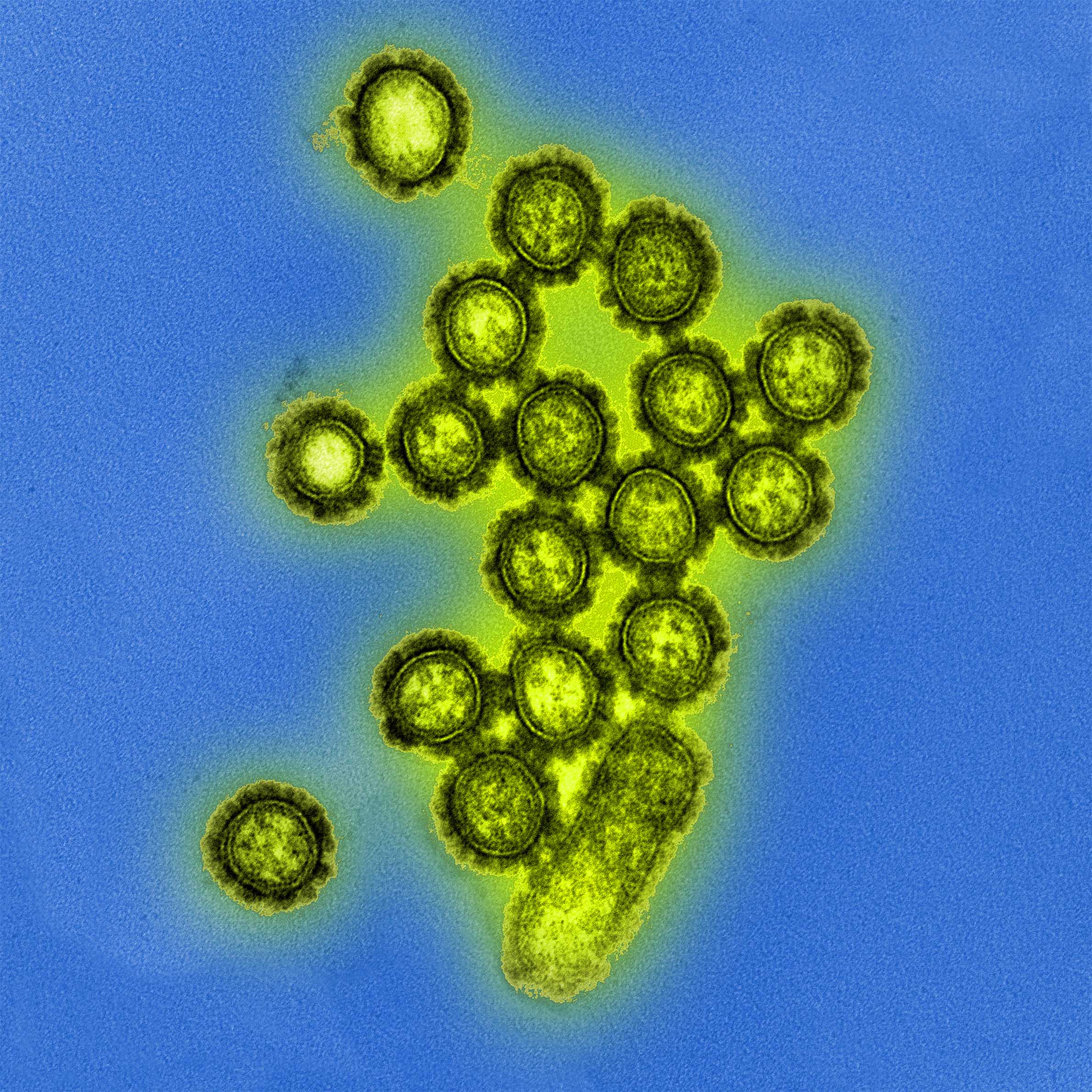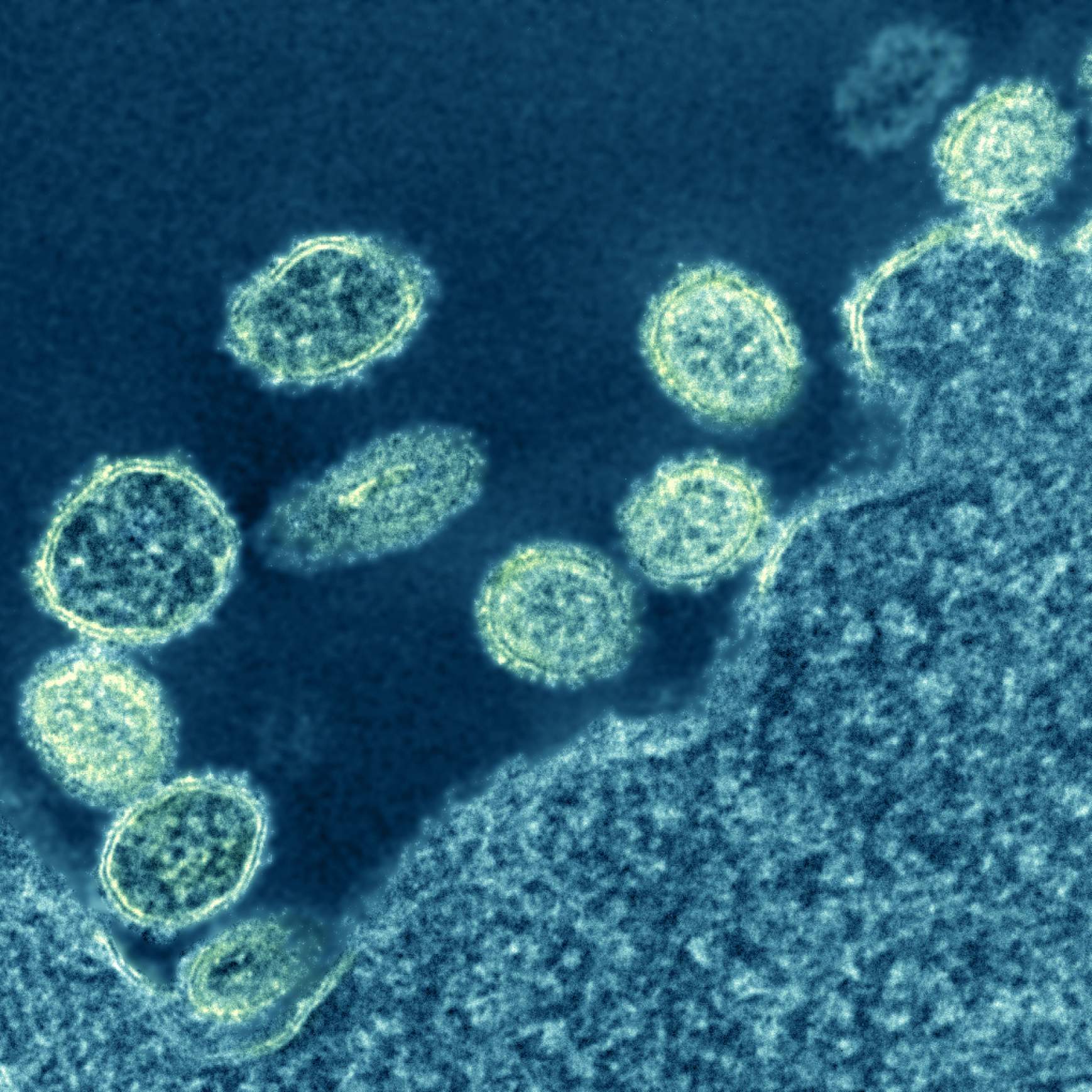
Evolving Research Is Exposing How Flu Crosses The Species Barrier

The 1918 influenza pandemic, known as the Spanish flu, killed up to 5 percent of the world's population — up to 100 million people. The pandemic reached Wisconsin in September 1918, and by early 1919 the highly contagious and deadly strain of the virus had sickened more than 100,000 Wisconsinites and killed nearly 10,000.
The mass trauma was so acute that the Wisconsin State Board of Health proclaimed at the time that the outbreak would "forever be remembered as the most disastrous calamity that has ever been visited upon the people of Wisconsin."
The 1918 pandemic prompted intense interest in the disease, including in Wisconsin, placing scientists in the state at the vanguard of flu research over the ensuing century. Their work — along with Wisconsin's national role in flu monitoring — has made the state an unlikely central stage in the ongoing story of what humans know about influenza.
Three of Wisconsin's better-known flu scientists over the past half-century are Bernard Easterday, Christopher Olsen and Yoshihiro Kawaoka, all of whom are affiliated with the University of Wisconsin-Madison School of Veterinary Medicine. They spoke about their work at an Oct. 3, 2018 lecture for the Wednesday Nite @ the Lab series on the UW-Madison campus, recorded for Wisconsin Public Television's University Place.
Easterday is a professor emeritus of pathobiological sciences and dean emeritus of the UW-Madison veterinary school. In the mid-20th century, he was among a group of scientists around the world who were keenly interested in documenting the host species of influenza and whether and how influenza crosses species. By the 1970s, these researchers, including Easterday, had confirmed the presence of influenza viruses in pigs, humans, ducks, chickens, turkeys, horses and terns. They strongly suspected that the disease could cross species, but had so far been unable to document a clear case of interspecies transmission.
"There was considerable evidence that people who had been in contact with pigs had been infected," Easterday said during the talk, "because when they were tested they had antibody in their serum which indicated yes, they had been infected." So, when he heard from a veterinarian friend about a case near Brodhead in which influenza had stricken a hogs at a farm where at the same time a worker there had fallen ill, Easterday jumped into action.
"We collected the samples, and sure enough both the pigs and the farmer had [the same type of influenza virus]," Easterday said. "That was the first evidence that there was indeed a direct transmission." He reported these findings to the Centers for Disease Control and Prevention, which led to a brief moment in the international media spotlight for the residents of Brodhead.
Yet decades after the Brodhead discovery, there were only 50 known cases of pig-to-human transmission of influenza. Christopher Olsen, a professor emeritus of pathobiological sciences at the UW vet school and director of a student certificate program at the Global Health Institute at UW-Madison, compiled a list of such transmissions with collaborators at the University of Iowa.
Olsen said that he and his colleagues suspected that pig-to-human flu transmissions were actually much more common, so they conducted a series of studies to build on Easterday's work and more systematically document transmissions among farm workers in Wisconsin and elsewhere. Their results showed conclusively for the first time that swine flu regularly moves from pigs to humans who have close contact with them. Still, these types of swine viruses were rarely seen to move from human to human, Olsen said, though that changed dramatically in 2009.
A virulent strain of swine flu led to a 2009 pandemic that sickened people all over the world. The strain included genetic lineages of four different influenza viruses, including a classical swine flu, a human flu, a bird flu and a unique Eurasian swine virus that was discovered to be a bird flu that had evolved in pigs.
Olsen was able to better understand interspecies jumps using a technique developed by Yoshihiro Kawaoka, a professor of pathobiological sciences at the UW veterinary school. Along with a UW colleague, virologist Gabriele Neumann, Kawaoka developed a lab technique in 1999 known as reverse genetics. The technique allows researchers to create targeted mutations in influenza viruses to understand how it responds to the mutations. Influenza has a unique genetic encoding system that gives rise to high number of mutations and allows it to evolve rapidly.
Kawaoka's reverse genetics system "has absolutely revolutionized influenza research," Olsen said in the lecture, including the ability to better track when and how influenza strains have jumped species barriers, an uncommon occurrence.
Kawaoka explained that he has not only used the technique to identify mutations in individual strains that would make it much easier for them to jump species, but to also become much more infectious. Some of this research has been controversial, including when Kawaoka identified four mutations that would make a particularly deadly strain of bird flu much more infectious in mammals.
Key facts:
- The flu pandemic of 1918 killed between 50 and 100 million people worldwide. A disease was reported at the same time in hogs throughout the Midwest, including in Wisconsin. Both viruses were later determined to be influenza.
- Influenza is thought to originate in waterfowl, including wild ducks. Because of the unique way the virus replicates its genetic information, influenza can quickly evolve within host organisms, making it better suited to jump between species. Influenza has been documented in a wide range of species, from chickens and turkeys to pigs and horses to marine mammals and humans.
- The first time the transmission of influenza from pigs to a human was confirmed was in Brodhead in 1976. UW-Madison veterinary medicine professor emeritus Bernard Easterday made the discovery.
- The swine flu pandemic of 2009 sickened people in over 200 nations and territories and killed more than 18,000, according to official figures from the World Health Organization. UW-Madison veterinary medicine professor emeritus Christopher Olsen said the actual number of deaths was likely far higher. The pandemic was caused by a strain of influenza known as an H1N1.
- Olsen's lab discovered a strain of H3N2 influenza in pigs in 1998. Pigs had previously only been known to be infected with the H1N1 strain. Most H3N2s are a type of influenza virus known as a triple reassortant, meaning it includes genetic material from bird, swine and human influenzas. These viruses are a results when multiple types of influenza viruses infect a single host and share genetic material. They have led to multiple pandemics, and a triple reassortant virus is thought to have been a precursor of the 2009 H1N1 pandemic.
- UW-Madison veterinary medicine professor Yoshihiro Kawaoka, along with a colleague, developed a research technique known as "reverse genetics." It allows researchers to identify genetic mutations that would make certain strains of influenza more virulent. The research has been controversial among some scientists who say it represents a potentially dangerous avenue of inquiry by making deadly viruses more infectious.
- Kawaoka also studies how wild viruses move between and among different species, including a dangerous strain of H7N9 bird influenza that appeared in China in 2016.
Key quotes:
- Bernard Easterday on what led to discovering the transmission of swine flu from pigs to humans: "[A] very dear colleague and friend of mine, Dr. Dean Pawlisch in Brodhead, Wisconsin, said to me at that time, he said, 'You know, I think I've seen in my practice, when I've had a case of swine influenza, that the farmer, the farm help, have been sick.' So I said, 'Well, when it happens again, let's see whether we might find it.' And not long after that, I got the call, and he says, 'I have sick pigs and a sick farmer.' We collected the samples and sure enough, both the pigs and the farmer had that.
- Christopher Olsen on his findings from a study of the movement of influenza from pigs to humans on hog farms in Wisconsin and Iowa: "[T]here was very clear evidence that swine influenza viruses move from pigs to people on quite a regular basis when we're talking about people who are regularly, repeatedly, daily in most cases, exposed to pigs."
- Christopher Olsen on the unique ability of influenza viruses to quickly evolve: "[T]his is a very powerful way of generating genetic diversity and the potential for new influenza viruses to appear."
- Christopher Olsen on the use of reverse genetics to understand influenza and other viruses: "[It] allows us now to make targeted mutations and then put it back into a virus and say, what does the virus do when we change these things? And that is a process that has absolutely revolutionized influenza virus research, and really, virus research in many ways, in general."
- Yoshihiro Kawaoka on a strain of H7N9 that he has studied: "This virus transmits well. … [the] virus has pandemic potential."




